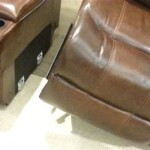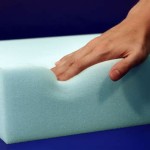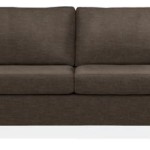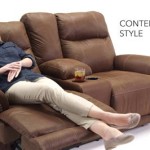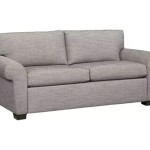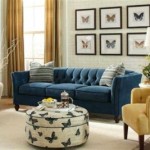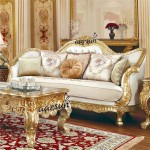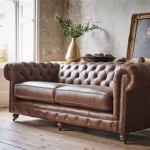Small Office with Sofa Bed Ideas: Maximizing Space and Functionality
For many, the home office is no longer a temporary solution but a permanent fixture. As remote work becomes increasingly prevalent, designing a dedicated workspace within the confines of a smaller home presents unique challenges. Integrating a sofa bed into a small office offers a clever solution, allowing the space to serve dual purposes: a productive work zone during the day and a comfortable guest room when needed. This article explores various ideas for incorporating a sofa bed into a small office, maximizing space, and optimizing functionality without compromising aesthetics or comfort.
Optimizing Space: Multifunctional Furniture and Layout Strategies
The key to successfully incorporating a sofa bed into a small office lies in strategic planning and selecting multifunctional furniture. Every piece should serve at least two purposes, minimizing clutter and maximizing available space. The sofa bed itself is the cornerstone of this approach, but other elements should complement its dual nature.
Consider a desk that can be folded away or used as a console table when the sofa bed is in use. Wall-mounted shelves are preferable to freestanding bookcases, freeing up floor space and providing ample storage for office supplies and décor. Vertical storage solutions, such as tall, narrow cabinets or pegboards, can also be implemented to maximize vertical space. These options offer storage without encroaching upon the room's footprint.
The layout of the room is equally important. Position the desk near a window to maximize natural light, creating a more inviting and productive workspace. The sofa bed should be placed against a wall, ideally opposite the desk, to create a balanced and visually appealing arrangement. Consider the available walking space when the sofa bed is extended. Leaving enough room to navigate comfortably is crucial for both daily use and when accommodating guests. Using rugs can also help define zones within the room. A rug under the desk area can delineate the workspace, while another rug in front of the sofa bed can create a cozy seating area.
Color palettes also play a significant role in creating the illusion of space. Light and neutral colors tend to make a room feel larger and more open. Incorporating mirrors can further enhance this effect by reflecting light and creating a sense of depth. While bright accents can add visual interest, avoid overly dark or busy patterns that can overwhelm a small space.
Finally, prioritize organization. Clutter not only makes a room feel smaller but also reduces productivity. Implementing a robust organizational system, including filing cabinets, storage boxes, and desk organizers, is essential for keeping the space tidy and functional. Regularly decluttering the office will also prevent it from becoming overwhelming.
Selecting the Right Sofa Bed: Comfort, Size, and Style
Choosing the right sofa bed is paramount. It must be comfortable both as a sofa and as a bed, fit the available space, and complement the overall aesthetics of the office. Several factors should be considered during the selection process.
Consider the type of sofa bed mechanism. Pull-out sofa beds are a common choice, offering a relatively simple and straightforward design. However, click-clack sofa beds, which fold down into a flat surface, may be more space-efficient and easier to operate, especially in tight spaces. Sleeper chairs, which transform into single beds, are another option for very small offices or for accommodating only one guest.
The size of the sofa bed is critical. Accurately measure the available space, accounting for the extended length of the bed. Choose a sofa bed that fits comfortably without obstructing doorways or walkways. Consider the mattress size as well. A full-size or queen-size mattress typically provides more comfort for guests, but a twin-size mattress may be more practical in a smaller office.
Comfort is another crucial factor. Look for a sofa bed with a comfortable mattress and supportive cushions. Memory foam mattresses are a popular choice, offering excellent pressure relief and conforming to the body's contours. Consider the quality of the sofa's upholstery. Durable and stain-resistant fabrics are preferable, especially if the sofa bed will be used frequently. Leather or microfiber are good options.
The style of the sofa bed should complement the overall design of the office. Choose a sofa bed that matches the color scheme and décor of the room. A sleek and modern sofa bed may be a good choice for a contemporary office, while a more traditional sofa bed may be better suited for a classic or transitional space. Add throw pillows and blankets to enhance the comfort and aesthetics of the sofa bed, making it more inviting for guests.
When selecting a sofa bed, consider its ease of use. Choose a model that is easy to convert from sofa to bed and back again. A heavy and cumbersome sofa bed can be difficult to operate, especially for occasional guests. Look for a sofa bed with a smooth and reliable mechanism that can be easily operated by one person.
Creating a Productive Workspace: Ergonomics and Functionality
While the sofa bed addresses the need for guest accommodation, the small office must primarily function as a productive workspace. Optimizing ergonomics and functionality is crucial for ensuring comfort and efficiency during work hours. A well-designed workspace can minimize strain and fatigue, promoting focus and concentration.
Invest in an ergonomic chair. A comfortable and supportive chair is essential for maintaining good posture and preventing back pain. Look for a chair with adjustable height, lumbar support, and armrests. The chair should be adjusted to ensure that the user's feet are flat on the floor and the elbows are at a 90-degree angle when typing.
The desk should be positioned at a comfortable height. If the desk is too high or too low, it can cause strain on the neck and shoulders. The ideal desk height is typically around 28 to 30 inches, but it may vary depending on the user's height. Consider a standing desk or a desk converter if you prefer to alternate between sitting and standing throughout the day.
Proper lighting is crucial for a productive workspace. Maximize natural light by positioning the desk near a window. Supplement natural light with artificial lighting, such as a desk lamp or overhead light fixture. Choose a light bulb that provides sufficient illumination without causing glare or eye strain. LED bulbs are a good option, offering energy efficiency and long-lasting performance.
Organize the desk to minimize clutter and maximize efficiency. Keep essential items within easy reach, such as pens, paper, and a phone. Use desk organizers to store supplies and keep the surface tidy. Route cables and cords to prevent them from becoming tangled and creating a tripping hazard. A cable management system can help keep the workspace neat and organized.
Personalize the office with décor that inspires and motivates. Add plants, artwork, or photographs to create a more inviting and stimulating workspace. However, avoid cluttering the space with too many decorative items, which can be distracting and overwhelming. Create a balance between functionality and aesthetics to create a workspace that is both productive and enjoyable.
Consider noise reduction strategies. If the office is located in a noisy area, consider using soundproofing materials, such as acoustic panels or curtains. Noise-canceling headphones can also help block out distractions and improve concentration. Creating a quiet and peaceful workspace is essential for maximizing productivity.
Implement a system for managing paperwork and files. Use filing cabinets, storage boxes, and digital filing systems to keep documents organized and accessible. Regularly declutter paperwork to prevent it from piling up and creating clutter. A well-organized filing system can save time and reduce stress.
By carefully considering these factors, it is possible to create a small office with a sofa bed that is both functional and aesthetically pleasing. The key is to prioritize space optimization, select the right furniture, and create a comfortable and productive workspace.

A Small Yet Clean Home Office With Wooden Trestle Leg Desk By The Window And Grey Sofa T Guest Room Combo Bedrooms

Picture Of Cozy Scandinavian Style Bedroom Home Office Design Guest Room

8 Office Guest Room Ideas For A Versatile Space Decorilla

A Create Perfect Interior Design Project House Tour Guest Bedroom Home Office

Combining A Home Office And Guest Bedroom In Small House

Office Life Home Bedroom Guest Small

Small Home Office Design Two Plans Shabbyfufu Com

Home Office Guest Room Design Micheala Diane Designs

25 Versatile Home Offices That Double As Gorgeous Guest Rooms Decoist

Guest Bedroom Home Office Room Combo

